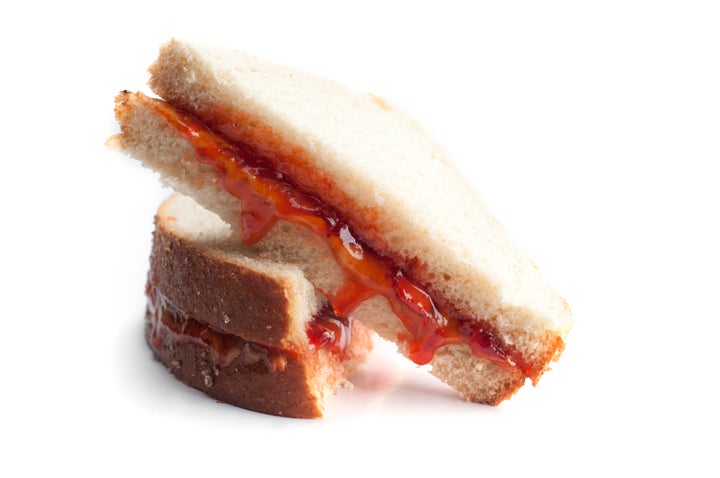With its fluffy, melt-in-your-mouth texture, soft bread is one of the most delectable eats out there — especially when it’s warmed to perfection and slathered in melted butter, or when it’s making the perfect pillow around a sandwich.
What makes soft bread so irresistible? In a word, nostalgia. (We’re looking at you, Wonder Bread.)
“There’s something extremely comforting about the super-soft poppyseed bun that deteriorates as you eat a Chicago dog, or the Italian roll that soaks up just the right amount of juice on your Italian beef sandwich that without it, wouldn’t be the same sandwich,” said Greg Wade, head baker at Publican Quality Bread in Chicago.

Objectively, soft breads aren’t “good” breads (think white sandwich bread). “They have no flavor, they fall apart when you eat them, and they’re arguably bad for your health,” Wade said. “But truth be told, I’m going to be pretty upset if I get a Chicago dog and it’s not on a soft poppyseed bun.” And the same could be said for a peanut butter and jelly sandwich that’s made on anything but white bread.
Nostalgia can be a powerful force, and in this case, it keeps bringing us back to those soft factory breads that we grew up with, twist ties and all.
But alas, the qualities that make soft bread so good are also the things that make it unbearably difficult to work with. Just ask anyone who’s attempted to spread butter on soft bread only to end up tearing it, or eat a sandwich made with soft bread that practically disintegrated in their hands.
Fortunately, with a little patience and a few handy skills under your belt, you can enjoy the soft bread you love and keep it intact, say experts. Here’s how.
Have The Right Tools Handy
When you’re slicing soft bread straight from the loaf, “using a long serrated bread knife for slicing is key,” said Laura Kasavan, a California-based recipe developer and baker behind the blog Tucci Dolci. You want to make sure it’s long enough to slice the bread in complete strokes so you end up with even, consistent slices.
For cutting sandwiches, a chef’s knife (not a serrated one) will help to ensure a clean cut and minimal squishing.
In both cases, make sure your knives are sharp and let them do the work. “Resist the urge to just cleave your bread or sandwich with whatever you’re letting pass as a proper kitchen utensil,” Wade said.
As for spreads, “an offset metal spatula with a flat blade is ideal for spreading even layers while keeping the bread intact,” Kasavan said.
Make Sure The Loaf Has Cooled
If you’re baking the bread yourself, allow the loaf to cool completely before slicing. “As the bread cools, the crumb structure sets up,” Kasavan said. “Slicing into soft bread too early will squish the loaf and result in a gummy texture.”
Let The Knife Do The Work
Gently saw back and forth with your serrated knife, making long passes with limited downward pressure. “This will keep the crumb and loaf from compressing,” said Martin Philip, head bread baker at King Arthur Flour in Vermont and author of “Breaking Bread.”
The same goes for cutting sandwiches: “Use a long, smooth slicing motion and let the knife fall through the bread,” Wade said.

Step Up Your Spread Game
When you’re working with soft bread, the temperature of your spreads is everything. “If you’re adding a nut butter or soft cheese, both should be at room temperature (or even slightly warmed) so they spread easily without tearing the bread,” Kasavan said.
The colder the spread, the harder you’ll have to apply pressure to the bread to cover it—and the more likely it’ll be a torn up mess by the time you’re done. This is especially the case when attempting to spread butter straight from the fridge.
“I recommend keeping your butter in a butter bell so that you always have perfectly spreadable butter ready,” Kasavan said.
With room temp spreads or cold-yet-spreadable ones like mustard, mayo or hummus, add more spread than you might normally use, then use your offset spatula to gently swirl the spread over the bread. “Use a motion like frosting a cake for best results,” Kasavan suggested.
Since gooey spreads, like nut butter and jam, can still cause soft bread to tear even at room temp, you have a few options.
“You can spoon them into a small microwave-safe bowl and warm for 10-15 seconds,” Kasavan said. “Whisk gently, then use your offset spatula to gently swirl the nut butter or jam over the bread.”
You can also store your gooey spreads in a squeeze bottle instead, or buy them in squeeze packet form specifically to satisfy your future soft bread cravings.
But, uh, what if you’re not a fan of room temp spreads? Like, at all?
For starters, consider slicing your bread thicker and toasting it. “It makes a harder surface that can take some spreading pressure,” Philip said. Plus, a thicker slice can handle some toasting without morphing into a giant crouton.
Adding a chunk or two of cold spread to hot toast — butter, natural nut butter, jam — will allow it to melt just enough to make it spread easier with your offset spatula, but not so much that you miss out on that smooth hit of coolness to your tongue.
If toasting isn’t your thing and using cold spreads is a must, then make sure it’s thin enough to be spreadable at that temperature by adding a liquid that complements your spread, Wade said. Add milk or cream to cheese spreads, or lemon juice or olive oil to baba ghanouj or muhammara, for example, and gently spread it on just like you would if it were at room temp.
Or, you can invest in a snazzy butter shaver to make your cold spreads, well, spreadable.
Build A Better Sandwich
To prevent your sandwich from becoming soggy, toasting the bread isn’t your only option — the choice of bread can offer an assist, too. “Brioche is too tender for some sandwiches, whereas crusty sourdough or a demi-baguette can offer a more substantial backbone,” Philip said.
For a classic PB&J, spread the peanut butter over both sides of bread, then add the jam between the two slices. “The two layers of nut butter will prevent the bread from getting soggy and keep the jam contained in the center,” Kasavan said.
For sandwiches that involve condiments, you want to protect the bread from wet ingredients with some sort of a liquid-repelling barrier, like cheese or meat, then add condiments and thoroughly dried veggies to the interior. Finish things off with another slice of cheese and your second slice of bread.
And if you know you won’t be eating your sandwich for a bit (say, because you’re brown-bagging it), Kasavan recommended packing the sandwich ingredients separately and assembling the sandwich right before eating it to maximize the texture of your deliciously soft bread.
"bread" - Google News
July 06, 2020 at 05:02PM
https://ift.tt/2Z3gEoj
How To Make A Sandwich Without Absolutely Destroying Your Bread - HuffPost
"bread" - Google News
https://ift.tt/2pGzbrj
https://ift.tt/2Wle22m
Bagikan Berita Ini















0 Response to "How To Make A Sandwich Without Absolutely Destroying Your Bread - HuffPost"
Post a Comment